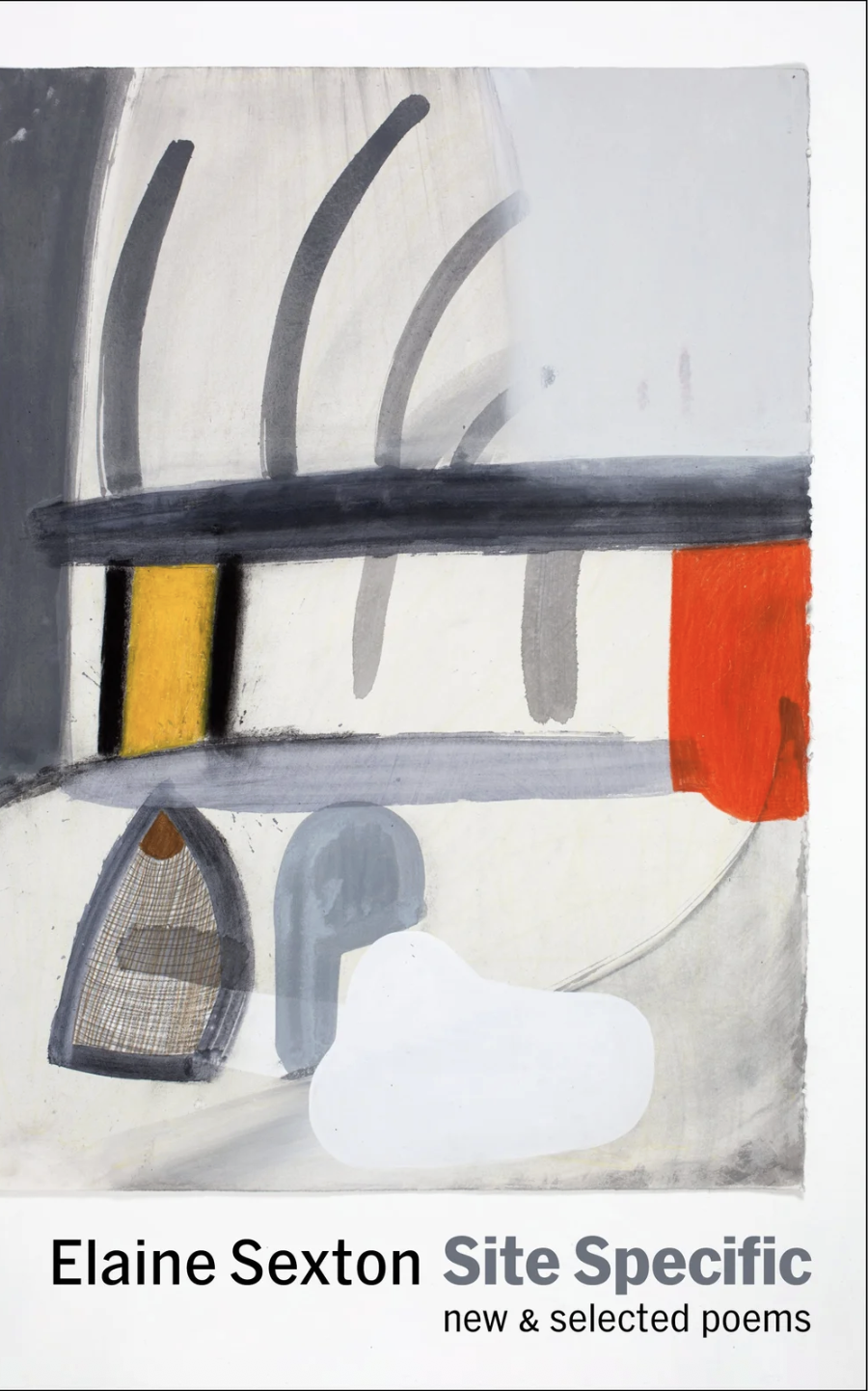 Why We Make Gardens abounds with… lyricism and in doing so may serve as explanation. We make gardens and poems and art to achieve gentle charms of word and life.
Why We Make Gardens abounds with… lyricism and in doing so may serve as explanation. We make gardens and poems and art to achieve gentle charms of word and life.
It’s a brave choice, writing poems with specificity, detailing, as is Jeanne Larsen’s choice in Why We Make Gardens (& Other Poems), a multiplicity of flowers; creating a real and imagined census report of of the bright bloom of yard.
Larsen has to know at least some of her readers, like myself, don’t make gardens and that our distance from planting, pruning, weeding, watering is not merely urban. Ten lifetimes ago, twenty, perhaps when I was a glimmer on another planet waiting my turn for a sodden life, I made jokes. I made coffee. Friends. Not gardens.
No matter. Larsen is a reliable narrator or poet-version thereof and beatified by finesse with craft. Titles guide, to say the least. “Garden of Destruction” “Garden of Rhapsodies” “The Garden of Sex (Parts I and II)” “Anger Garden” “Compassion’s Garden” “Flowering Judases” “In a Walled Garden, as Fall Begins.”
The titular “make” has staked a claim in art’s history (Frank Bidart’s Star Dust has much to do with making and art, for example) and that her gardens make much of our world. So what are we to make of this collection, and what does it want to make of gardens and flowers, which shadow our world and make of themselves a metaphor? The book’s divided into five sections, one of which, (Generations), dwells in the gardens of the lords and ladies of literature. From “The Garden of Age.”
Fearful, with little to fear. Dust-purple
asters, the monkshood’s last
campanile, orange suns of bittersweet,snapdragons sheltered, Chinese lanterns:
it makes cunning poesies. I might keep
a corner where malachite arrosof arum italicum rise. Nearby,
fresh hellebores, foamflower’s tough leaves,
coral-bells, wintergreen heaths:
Emphasis in each line is on the flowers, the sound of each noun, each name. Reading the above and some of the poems is like hearing the Mass in Latin. Something mysterious is happening and I’m not entirely sure what, but I’m sure I don’t always need specifics. For a poem to work it has to stand on its own, without chatty explanation by an overly eager poet at a reading. So what if I can’t envision each bloom. I hear the poem.
And Larsen does step in to quite specifically guide the “…delusory whispers” of our imaginations. “Pods split like hearts.” “New generations promise.” In a different poem, those phrases might be trite but “…Age” they are refuge and signpost. And don’t need my elucidation.
The Garden of Languages
You can’t draw a plan for it,
can’t trace on graph paper howit lays itself out. In the soil you find
peat, dung, worm-castings, shardsof earth’s mantle. You learn bees’
idiom, how they dance locations:where floxglove, where bergamot.
You know butterflies’ semaphore graces itas birds’ war-cries brush past,
& their love-slang. Know it’s been utteredin all the month’s dialects: from clear leafy-full
to the planter’s subterranean dark.You can excavate, translate―though
poorly. Can decode a few glyphs& their grammar. But must know this argot
isn’t yours.
An ironic payoff for a reader or poet or gardener, to know “this argot/ isn’t yours.” We are of nature but separated from its less thoughtful (than us), less willful (than us) constituency. And is Larsen simply talking about nature or about all thing which we “make”? “You can excavate, translate—though / poorly.” We’re lucky to understand something of ourselves. Is it better to understand life, or poetry, or to experience it?
Like Blake in “Auguries of Innocence,” Larsen sees the “world in a grain of sand,” and, maybe, “heaven in a wildflower.” “Auguries” is poem that wants to be prophetic and a cry against life’s baffling lack of justice (“A dog starved at his master’s gate / Predicts the ruin of the state.”). Larsen’s pain isn’t as accessible as Blake’s nor is her anger as evident.
But both poets know redemptions of beauty, for Larsen in garden and description of garden. Fromm “The Garden of Air”) “It’s always the shapes / around artemisia’s stars, buddleia / spears, a soft fall / of cilantro / Shapes around shape. / It’s evergreen ice glancing off winter’s ginger.” Buddleia, by the way, is a tropical shrub with extravagant drooping clusters of buds. And cilantro’s soft fall is a definite visual, the fragrant green flutter.
Why We Make Gardens abounds with such lyricism and in doing so may serve as explanation. We make gardens and poems and art to achieve gentle charms of word and life. Understanding isn’t what we’re after. We want to return to the garden, don’t we, to life without shame, to naked sport, to some sort of innocence (if it was a place we regretted leaving there had to be at least a bit of cunning and teasing. I mean, come on.). And if poetry, and a poet like Jeanne Larsen, can help us make our way, we can count ourselves lucky.




5 responses
The best post for me, is yours today! While busy constructing a post on the One Hundredth Anniversary of the Triangle fire (also today), I stopped to check my blogger dashboard and was rewarded by your review. I am a gardener, jus returned from friends in Massachusetts where we did yard work to uncover all the Spring bulbs bursting, then it snowed, but they return every year no matter what. I mark the calendar by blooms and buddings, April 1st I’ll be back at my earth labors on a small garden at a local church. Already the daffodils are opening, nest the hundred tulips I planted in the Fall, then glorious Irises! May I recommend to your readers Stanley Kunitz’ wonderful book of memoir and poems-The Wild Braid-(A poet reflects on a century in the garden)-about his stroke and his recovery through his Provincetown, Massachusetts garden. THANK YOU SARA for making my day!
Michell+++Much appreciated. Here’s my (unasked for) explication of Melville and Dickinson and Sarai: http://my3000lovingarms.blogspot.com/2011/03/when-herman-melville-emily-dickinson.html
I haven’t read that Kunitz although I considered referring to him … his exodus from Harvard (Harvard?) because the Ivies were not notoriously enamored of certain not-Christians and how in moving to a farm he learned nouns—names—names being a pretty good tool for poets well as flowers. So all worked out for K. There is an “h†in Sarah. If I were a better person I wouldn’t mention it but I am not a better person.
AHA! An ‘H’ there too…..and an ‘e’ at the end of Michelle as well
for better or worse. Onward. Read your Herman & Emily conjecture, and commented at the site. I get your loving arms dropped in to my blogger dashboard each time you post because I became a ‘follower’…perhaps you would like to become a follower of mine…http//mscomfortzone.blogspot.com…it sure would make me happy if you did.
This is a really neat review, the kind that makes one want to go out and get a hold of the ASAP! I especially like when reviewers like Sarah here use poming to review poming: “when I was a glimmer on another planet waiting my turn for a sodden life, I made jokes. I made coffee. Friends. Not gardens.”
I like that VERY much!
Steve Tills, theenk Books, Palmyra, New York
http://www.therepublicofcalifornia.com/theenk/theenkBooks.htm
Thanks, Sarah, for smart, kind word. Yup: the poems’re more about making, more about mind, than about, like, flowers. Great to have a reader like you.
@ Steve: no need to squelch that run-out-and-get-a-hold-of impulse, my friend. If yr local library doesn’t come through for ya, Mayapple Press will, for sure. Heh, heh, heh.
Click here to subscribe today and leave your comment.